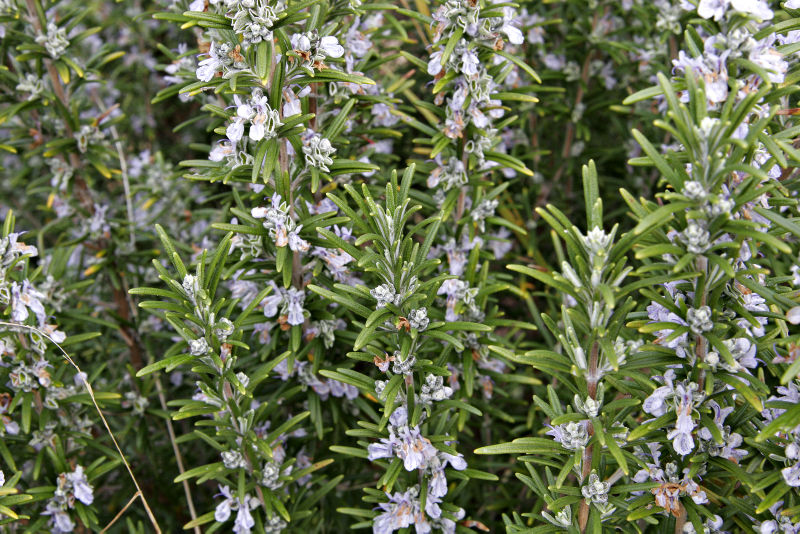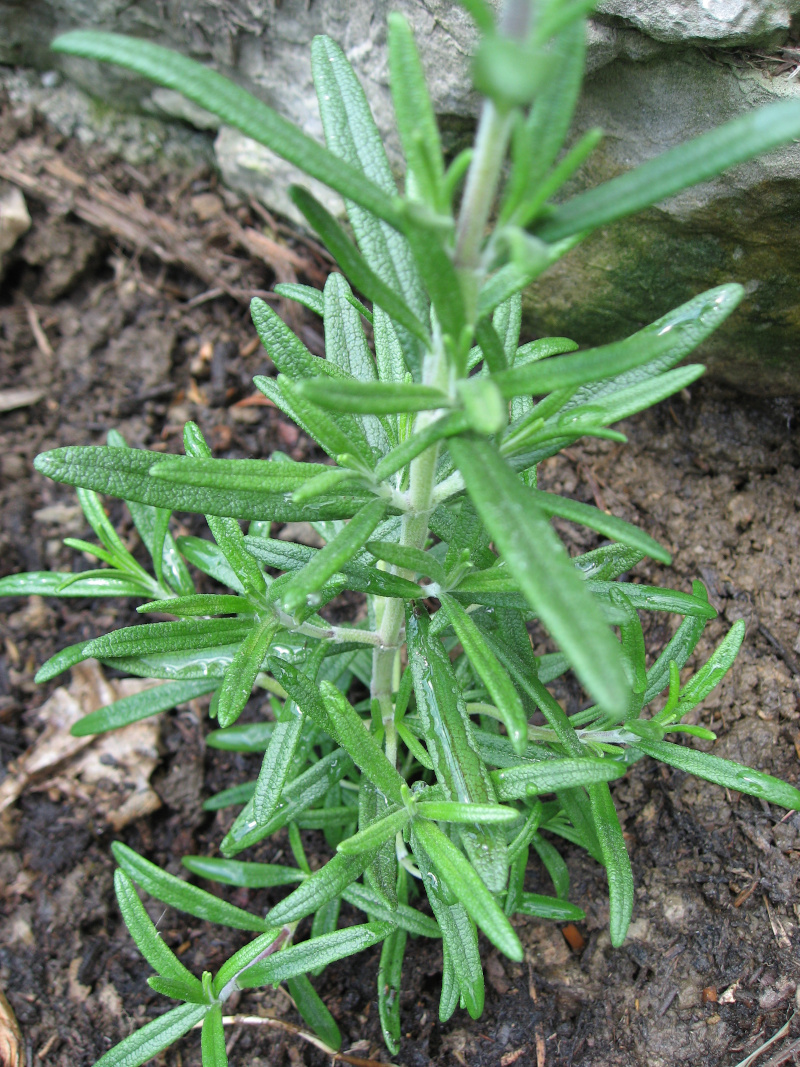Treat rosemary with respect; it can easily overpower more delicate herbs. Rosemary is traditionally used with lamb or pork, as well as in tea; it’s also excellent combined with a little lemon juice and chopped parsley and sprinkled on chicken before it’s baked. Rosemary is one of the traditional strewing herbs; in the language of flowers, its message is “remember.”
Where to Grow Rosemary
Rosemary can handle climates a bit below freezing and tolerates cold better in a sandy, well-drained location, but it’s not very hardy north of Washington, D.C. If your climate is cold, plan on mulching it for winter protection.
Soil for Growing Rosemary
Like most herbs, rosemary is most fragrant and full of flavor if grown in well-drained, sandy soil that’s high in organic matter but not over-rich. Less than ideal conditions improve its fragrance. Very fertile soil will produce beautiful plants but decrease the production of the aromatic oils on which the plant’s fragrance depends. Don’t fertilize the soil if you’re planting rosemary, except maybe if you’re growing it as a perennial in a mild winter climate. In this case, work a low-nitrogen (5-10-10) fertilizer into the soil before planting at the rate of about a half-pound per 100 square feet.
When to Grow Rosemary
To grow rosemary from seed, start the seeds indoors or in a cold frame four to six weeks before your average date of last frost. Two weeks after the average date of last frost, transplant them to a full sun location with a foot or more between the plants and 18 to 24 inches between rows.
How to Grow Rosemary
Rosemary is commonly started from stem cuttings or by layering. It can be propagated from seed, but germination is very slow (25 days at 65°F). Pot a rosemary plant from the garden in fall and bring it into the house for winter use. In the spring, take stem cuttings to propagate your new crop.
| Temperature | |
| Germination | 60 - 70 F |
| For Growth | Cool |
| Soil and Water | |
| Fertilizer | Not necessary |
| pH | 4.5 - 8.7 |
| Water | Average |
| Measurements | |
| Planting Depth | 1 - 2" |
| Root Depth | 14"+ |
| Height | 1 - 5' |
| Width | 3 - 6' |
| Space between plants | |
| In beds | 3" |
| in rows | 4 - 6" |
| space between rows | 12 - 15' |
| Companions | |
| Companions | Cabbage, Beans, Carrots, and Sage |
| Incompatibles | None |
| Harvest | |
| Harvest rosemary after new growth is generated, typically 6 weeks after planting. Do not cut any parts that appear woody, as this will damage the plant. | |
How to Cultivate Rosemary
Do not fertilize at mid-season. If the weather is dry, water regularly to keep the soil moist and prevent the roots from drying out.

| Storage Requirements | |
|---|---|
| Clip individual rosemary leaves or tips of stems as needed. Keep fresh rosemary in plastic bags in the refrigerator. Retain maximum flavor by freezing rosemary. Either freeze entire branches on cookie sheets, then strip the leaves from the stems and put back into the freezer in plastic containers; or mix finely chopped rosemary leaves with just enough olive oil to bind them together, and freeze the mixture in ice cubes. Store the rosemary for longer periods by hanging bundles of the stems to dry in a warm, dry, dark place. Once dry, keep the leaves in an airtight container. | |
| Method | Taste |
| Fresh | Excellent; cuttings last 2-7 days in the refrigerator |
| Dried | Fair |
| Frozen | Good |
How Rosemary Grows
Rosemary is a strongly flavored, half-hardy, evergreen shrub. It’s a perennial, but it’s grown as an annual in areas with frigid winters. With its aromatic, needle-shaped, blue-green leaves, it is easily identifiable. Different varieties are available; tall upright kinds and tumbling prostrate forms. Not all are very hardy, so choose carefully. It produces pale blue, white, or pink flowers in late spring, and it varies in height from 2 to 5 feet, depending on the variety.
Harvesting Rosemary
You can take some of the leaves, which look like short pine needles and use them fresh any time you want them. Growth can be pruned back several times during a season. Dry the leaves and store them in airtight containers. Rosemary and other hard herbs also freeze quite well. Wash and dry them off in cold water, and place them in a plastic bag or container in the freezer for a few weeks. The leaves should separate easily from the stem and keep for quite a while if left in the freezer.
Rosemary Pests
Rosemary has no serious problems with pests.
Rosemary Diseases
Rosemary has no notable concerns with diseases.
